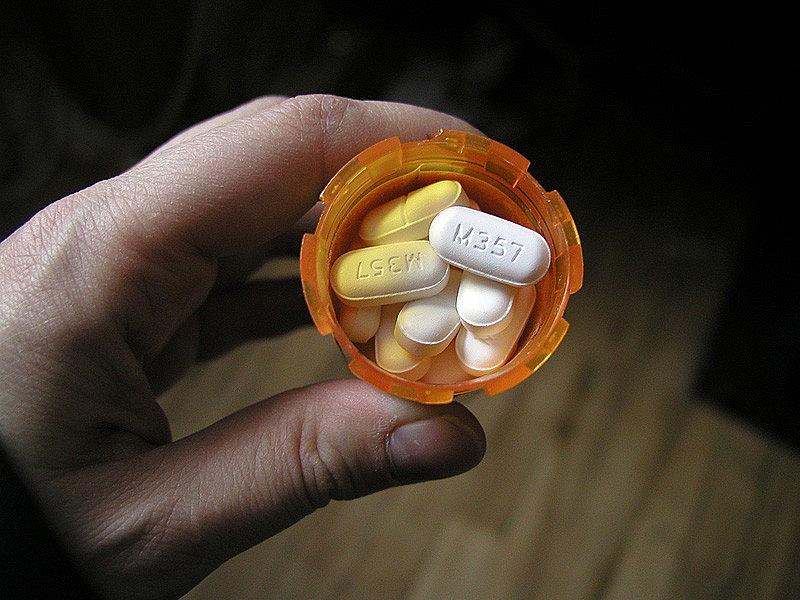The obscurity of drug spending in California's Medicaid program
Pauline Bartolone's reporting was undertaken as a participant in the 2015 California Data Fellowship at the Center for Health Journalism, a program of the University of Southern California’s Annenberg School of Journalism.
Other stories in the series include:
California doles out hefty payments for Hepatitis C drugs
The other ‘high-cost’ drugs: What specialty drugs mean for California

Photo via Flickr
California will be a flashpoint in the policy debate this year around reining in the cost of high-priced prescription drugs.
A measure expected to be before voters this November would restrict the state’s drug payment to no more than the lowest price paid for the same drug by the U.S. Department of Veterans Affairs.
And an unlikely coalition of health insurers, labor and consumer advocates promises to keep pushing for controls on high-cost drugs, after a state Assembly bill that would have forced pharmaceutical manufacturers to disclose their costs stalled in committee last week.
“California is truly ground zero for this fight,” says Mike Roth, spokesperson for the campaign to pass the California Drug Price Relief Act, about efforts to lower prescription drug costs. The ballot initiative’s campaign is funded by the AIDS Healthcare Foundation. “It is clear Congress as a whole is not going to take meaningful action.”
Over the coming months, CALmatters will investigate how specialty and other high-cost drugs are affecting the state budget, particularly Medi-Cal, which covers almost one in three Californians.
But as we’ve learned so far, just as there may be a lack of transparency about how drug makers price drugs, what is actually spent on a particular drug is also obscured — by confidentiality laws.
Sources with the California Department of Health Care Services told us that both federal and state laws prevent the public from knowing the ultimate price the state pays for a particular drug. Drug price negotiations contain proprietary information, trade secrets.
“There’s a lack of transparency all through this,” says Joel Hay, professor of pharmaceutical economics and policy at the University of Southern California.
“You don’t know anything about these confidential price rebates, and you never will.”
Hay said researchers only have “vague ideas” of the drug price discounts given to health care programs like Medi-Cal, but there is a public benefit to keeping them confidential: It helps ensure that health programs that cover the poor keep receiving discounts.
If, for example, California’s discounted drug prices were public, Hay said, insurance companies and other health care payers would demand the same price. In that scenario, manufacturers may decide to sell the drug at the same amount to everyone. Without a discount, the price may be too high for Medicaid, and California might be forced to limit access to brand-name drugs.
“The State of California, to protect the taxpayers, and to protect the funding for its Medi-Cal recipients, is not going to reveal the confidential rebates it gets,” Hay said.
There are other challenges to identifying overall state drug spending trends in Medi-Cal. The program has two payment systems for its 12.8 million members. Roughly 80 percent of recipients have coverage through health plans, and services for the rest are reimbursed directly by the state.
- 10.1 million Medi-Cal members get care from 22 managed-care organizations, and their spending on prescription drugs — on a “granular” level — is neither aggregated nor public.
- The state Department of Health Care Services puts the fee-for-service population’s prescription usage data online, but it doesn’t disclose the final price it pays for drugs.
There’s reason to believe the state is feeling the cost pressure of new Hepatitis C drugs like Sovaldi, drugs which California says cost $85,000 per course of treatment.
“It’s a very serious problem,” said California Health and Human Services Secretary Diana Dooley about the high cost of prescription drugs.
Dooley says drug prices are a problem for many health care payers; CalPERS, Medi-Cal and private insurers, too. The state is addressing the issue “in every way (it) can.”
“There are very few tools in our toolbox,” Dooley said.
Over the next few months, CALmatters will find out more about measures the state is taking to manage high-cost drugs. We’ll blog pieces of the drug spending picture along the way on Medium and CALmatters.org; on how per-member prescription drug spending has changed over time, which drugs account for the most spending, who they benefit, and how patient access is affected by a drug’s cost. Our blog posts will culminate in a story we’ll distribute to CALmatters’ print, online and radio news partners throughout California.
Tell us what you think:
- Suggest ways to examine the impact of high-cost drugs on California’s budget
- Share opinions about bringing transparency to drug pricing, and what is ultimately spent on drugs.
- Suggest another drug price question you’d like us to explore.
[This story was originally published by CalMatters.]
Photo via Flickr.
